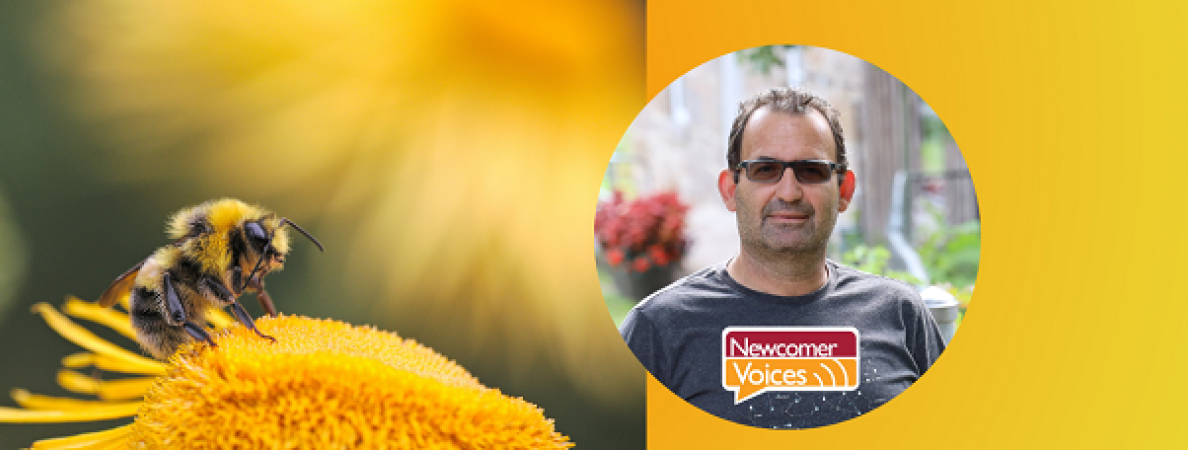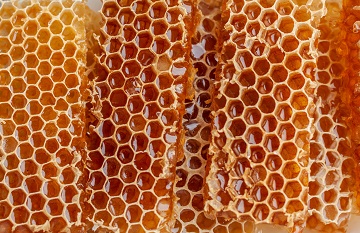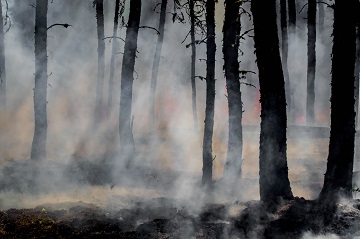
By Suat Nayman
Who doesn't love honey? Honey is made by honeybees. Honeybees produce honey by collecting pollen from surrounding flowers. The name of honey changes according to where the pollen is collected. For example, orange honey, chestnut honey, flower honey, pine honey, etc. There are many kinds of honey in the world. I want to talk about pine honey in this article because pine honey is different in both colour and taste from other kinds of honey and is mainly produced around my country. Unfortunately, a large amount of pine forest was burned in the forest fires last year. We will also talk about the effects of these fires on the production of honey in this article.

Image: pancakes with honey on plate
Everyone knows how honey is made. Honey is the complex substance made when bees ingest nectar, process it, and store the essence into honeycombs. Bees produce honey from the sugary secretions of plants (floral nectar) or secretions of other insects (such as honeydew) by regurgitation, enzymatic activity, and water evaporation.

Image: close-up shot of honeycombs
There are many kinds of bees living on earth. The bee of each region is different; even if the bee residing in one part lives in another area, you cannot get the exact same product. Each bee is a master at making its honey. This mastery accumulates tens of thousands of years and is passed on genetically to the next generation.
Pine honey is a type of honeydew honey. It is primarily produced in the pine forest of the Eastern Mediterranean. It is sweet and spicy honey, with some woody notes, a resinous fragrance and dark amber colour. Pine honey is an unusual honey because honeybees do not produce it from pine tree pollen; they produce it by collecting honeydew from a scale insect species called Marchalina Hellenica.
Marchalina Hellenica is a scale insect in the Eastern Mediterranean region, mainly Greece and Turkey. It lives by sucking the sap of pine trees. It can be found hidden under a white cottony wax. It hides in the cracks of bark and under the scales of these trees. It extracts excess carbohydrates, which is the honeydew, and uses this as an essential food source.

Image: forest fire
In 2020, 10.1 million acres of forests were burned and around 500 million bees perished in forest fires worldwide. About 100 million of these are honeybees living in Eastern Mediterranean. Bees can change places; but their efficiency drops when they change locations. For this reason, it cannot be expected that the newly arrived bees will be fully productive. But the real problem here is the extinction of Marchalina Hellenica in this area because of the forest fire and the need to replace the creature that makes the original honey. It is not yet known how long this creature will need to regenerate. As a result, we may not be able to find quality pine honey for a long time, or if we can find it, it will not be cheap.
Resources:
- https://tr.euronews.com
- https://www.bbc.com/turkce
- https://en.wikipedia.org/wiki/Pine_honey
- https://en.wikipedia.org/wiki/Marchalina_hellenica
Images:

Suat Nayman is from Turkey. He studied Mathematics at university but always worked in the Stock Exchange in Istanbul as a broker. Suat came to Canada in August 2019 after working as Financial Manager at different companies for 19 years. He started language education with Mohawk College in September 2021, where he's attending the LINC 5/6 Media Project class. He has been living in Niagara Falls since April 2021. Suat likes hiking, travelling and scuba diving. Suat's goal is to reach the speaking CLB 7.

Newcomer Voices is a space for students in the Programs for Newcomers Department to express their ideas, culture and experiences in Canada. Learn how Mohawk College supports newcomers through free English classes, work-related courses and more.
Mohawk's free Programs for Newcomers





